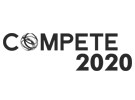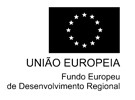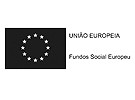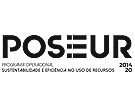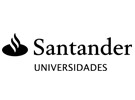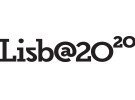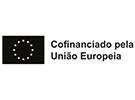



Publication in the Diário da República: Despacho n.º 5958/2024 de 27/05/2024
5 ECTS; 2º Ano, 1º Semestre, 56,0 TP , Cód. 604214.
Lecturer
(1) Docente Responsável
(2) Docente que lecciona
Prerequisites
Not applicable.
Objectives
1. Understand concepts and techniques of accounting records inherent to operations of classes 2, 3, 4, 5, 6 and 7, according to the SNC standard;
2. Analyze the reflection of specific operations in the disclosure of information;
3. Interpret the accounting outputs specific to each of the operations performed - especially with regard to year-end work, taking into account the various users of the information;
4. Understand the need for information to be disclosed in the Financial Statements: Balance Sheet, Income Statement, Statement of Changes in Equity, Cash Flow Statement and Annex;
5. Analyze the outputs generated by the Financial Statements;
6. Interpret accounting outputs for accountability;
7. Prepare the elements of accountability in private companies.
Program
1. Accounting of Business Operations
I. The Operational Cycle
1.I.1. Continuation of study initiated in Financial Accounting I for Accounts Receivable and Accounts Payable - Standards: NCRF 5, 8 and 12
- Key Concepts, Recognition and Measurement: Initial and Subsequent, Impairment, Disclosures
- Study of accounts: State and Other Public Entities, Shareholders / Partners Other accounts receivable and payable, Personnel
II. The Investment Cycle:
1.II.1. Tangible Fixed Assets (NCRF 7):
- Concepts
- Recognition and measurement: initial and subsequent
- Allowed models: revaluation versus cost
- Asset Depreciation Methods
- Derecognition: disposals and killings
- Impairment (NCRF 12)
- Asset Related Subsidies (NCRF 22)
- Disclosures
1.II.2. Intangible Assets (NCRF 6):
- Concepts
- Recognition and measurement: initial and subsequent
- The case of research and development
- Allowed models: revaluation versus cost
- Problem of life and its consequences
- Impairment (NCRF 12)
- Derecognition: disposals and killings
- Disclosures
1.II.3. Investment Properties (NCRF 11):
- Concepts
- Recognition and measurement: initial and subsequent
- Transfers and disposals
- Impairment (NCRF 12)
- Disclosures
1.II.4. Financial Investments (NCRF 13 and NCRF 15):
- Concepts
- Treatment of business to business links (legal accounting concept)
- Joint ventures, investments in associates and subsidiaries
- Recognition and measurement: the equity method
- Impairment (NCRF 12)
- Disclosures
1.II.5. Non-current assets held for sale (NCRF 8):
- Concepts
- Classification of non-current assets held for sale
- Recognition and measurement
- Disclosures
1.II.6. Study of other NCRF with direct application to the Investment Cycle:
- NRCF 9 - Rentals
- NCRF 10 - Borrowing Costs
- NCRF 22 - Grants and Other Support from Public Entities
III. The Financing Cycle
1.III.1. Introduction - Equity versus foreign capital
1.III.2. Equity
- Share capital
- Equity shares: shares and shares
- Subscription and realization of capital
- Reservations
- Supplementary capital and ancillary benefits
- Own shares / quotas
1.III.3. Foreign capital - Some cases:
- Bank Loans (NRCF 10)
- Finance lease and operating lease (NCRF 9)
- Bond loans:
Issuance and Subscription
Issue premium, issue discount and redemption premium
Interest Recognition
Refund
2. Periodic Clearance Operations
I. VAT Clearance
II. Clearance of results
2.II.1. Concepts
2.II.2. Postings of regularization and calculation of results
2.II.3. Accounting policies, changes in accounting estimates and errors (NCRF 4)
2.II.4. Events after the balance sheet date (NCRF 24)
III. Calculation and accounting of income tax
IV. The financial statements and the accounting documents
Evaluation Methodology
TTwo types of assessment:
1. Continuous assessment:
- Two tests (40%+60%=100%). Minimum grade in each test: 7 points.
- Attendance awards Only applies to face-to-face classes - Students with a final grade equal to or greater than 9.5 (weighted average) will be approved.
- Grade defense: for final classification higher than 17 points. Non-presence implies the attribution of a classification of 17 values
- The remaining students will be admitted to the Exam
2. Non-continuous assessment - Exam and Appeal Exams:
- Written test (100%)
- Grade defense: for final classification higher than 17 points. Non-presence implies the attribution of a classification of 17 values.
Bibliography
- , . (2022). SNC - Sistema de Normalização Contabilística. Porto: Porto Editora
- Alves, G. e Costa, C. (2021). Contabilidade Financeira. Lisboa: Rei dos Livros
- Ferrão, M. e Borges, A. (2012). Manual de Casos Práticos. Lisboa: Áreas Editora
- Lourenço, I. e Morais, A. e Lopes, A. (2020). Fundamentos de Contabilidade Financeira. Lisboa: Edições Sílabo
- Rodrigues, R. e Rodrigues, J. e Rodrigues, A. e Borges, A. (2021). Elementos de Contabilidade Geral. Lisboa: Áreas Editora
Teaching Method
Lectures supported by audiovisual resources and pedagogic simulation.
Software used in class
Not applicable.


